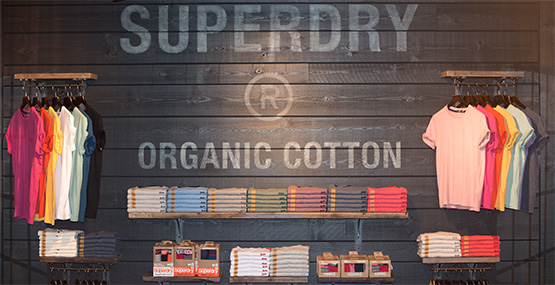
Cotton
Organic Cotton
Quite simply, organic cotton is better for the planet and the people that grow it.
By using natural techniques and fertilizers, organic farming improves soil condition, leading to reduced use of precious and limited sources of water.
Healthier soil also increases carbon storage wihtin the ground, helping to combat climate change.
This all leads to stronger biodiversity and better health among the cotton growers.
Extra soft and breathable, with a kind to skin finish, organic cotton is better for the people who wear it too.


"Farming practices used in organic agriculture, such as crop rotation, green manure, composting, reduced tillage, and the recycling of crop residue, can help increase the amount of organic matter - including carbon - in the soil. As a result, soil structure is improved and soil erosion is reduced, making nutrients more easily available to the crops while also increasing the abundance of soil fauna."
Textile Exchange, Organic Cotton Market Report 2021
We started with organic cotton underwear, tees, polos, shirts & socks and have accelerated our organic cotton targets by five years, which will see all of our pure cotton garments produced entirely from organic cotton or cotton in conversion by 2025.
This will mean that 65% of all our garments containing cotton will be derived from organic cotton sources. Currently, 38% of our cotton garments are organic.
These targets are part of an ambitious strategy that will see Superdry support our organic cotton requirements by helping 20,000 farmers adopt the latest sustainable organic cotton farming practice. In 2021 we worked directly with 1,824 farmers, which has increased to 12,787 farmers in 2023. By 2025, our farmer programme should provide all the cotton we need.
We are investing to boost the organic cotton industry - Superdry is the only global fashion brand to commit to converting the number of farmers needed to meet our organic cotton requirement
Organic cotton uses 87% less water and reduces CO2 emissions by 14% compared to conventional cotton
This data is gathered using the 'Higg Material Sustainability Index'. More information about their data and methodologies can be found on their WEBSITE.
